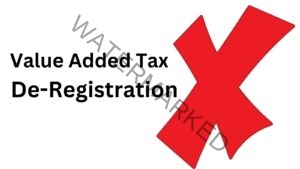In some countries, there are certain non-cash benefits that businesses provide to their employees in addition to their regular salaries. Some of the benefits which in most cases are incentives are known as “fringe benefits” or “perquisites.”
The benefits may consist of loans to buy such items as vehicles, houses, health insurance, entertainment expenses, interest-free loans, and more. In most cases, the benefits are subject to Fringe Benefit Tax (FBT).
a. Affiliate Disclosure: These are affiliate links from which we receive a commission at no cost. Read full Affiliate marketing disclosure HERE.
b. Tax Contents Disclaimer: The tax industry in Kenya is very dynamic. The tax contents in the posts are not professional advice. Read full disclosure HERE.
FBT is put mostly in place to ensure that employees pay taxes on the whole value of their compensation from employers, not just their salaries. Taxing fringe benefits helps prevents employees from obtaining non-monetary compensation not subject to tax
The following are some fundamental FBT aspects that you should know:
Employer Responsibilities:
In most cases, it is the employer who must pay FBT, not the employee. The employer, who is also responsible for paying the required tax to the government, must determine the worth of the fringe benefits provided to employees.
Benefits Valuation:
Determining the fair market value of a benefit is necessary to calculate its value, which can be challenging. Different countries have different standards and laws for evaluating certain benefits. In Kenya, the tax-Commissioner provides the rate for the benefit.
For example, if employees get low-interest loans from employers to purchase a vehicle, the tax Commissioner provide an interest rate which is lower than the prevailing market rate. The rates are set for several months for example 3 months.
The tax-Commissioner can set the rate at for example at 10%. This means that in case an employee gets a loan of kshs 500,000 interest-free for one year, the employer will be required to determine the income tax and remit to the tax-Commissioner as follows:
Loan amount — kshs 500,000
Annual Forfeited interest 10% x kshs 500,000 = kshs 50,000
Annual Tax kshs 50,000 x 30% (income tax) = kshs 15,000
Monthly tax payment kshs 15,000/12 = kshs 1,250
The employer will remit kshs 1,250 per month for one year.
Exemptions and Thresholds:
In many countries, exemptions and thresholds for FBT are standard. This implies that some fringe benefits may not be subject to taxation and that there may be a value beyond which FBT is exempt. In Kenya, there is no fringe benefit that is tax exempt.
Reporting and Compliance:
Employers frequently need to let the tax-Commissioner know how much each employee’s fringe benefits are. This reporting ensures transparency and gives the tax-Commissioner the ability to confirm that the correct amount of FBT is being paid. In Kenya, this reporting obligation to the tax-Commissioner is by making payment by the 20th of every month after the FBT benefits have been given.
Benefits:
A wide range of benefits may be subject to FBT depending on the country and its tax legislation. Examples of typical benefits include loans for cars, health insurance, gym memberships, housing allowances, and other charges. The government provides a list of items that are subject to FBT.
Employee Deductions:
FBT is not an employee expense. Hence, employees are not permitted to deduct FBT paid by the employer when calculating their own individual income tax burden.
Consequences for Employers:
Employers are required to manage and document all fringe benefits provided to employees in order to ensure accurate reporting and compliance with FBT is maintained. This will also enable the employers to remit the FBT on time.
It’s important to keep in mind that FBT regulations might change substantially from one year to the other. The rates also change depending on the prevailing market rates. Some times, the mechanism for calculating fringe benefit taxes may be detailed and complex.
Hence, it is advisable to consult a tax expert or review the regulations set forth by the tax-Commissioner. In case you are an employer or employee looking for more information on FBT, get in touch using the contact information provided HERE.
Thank you for reading the article.
Dr. Wakaguyu W.K




